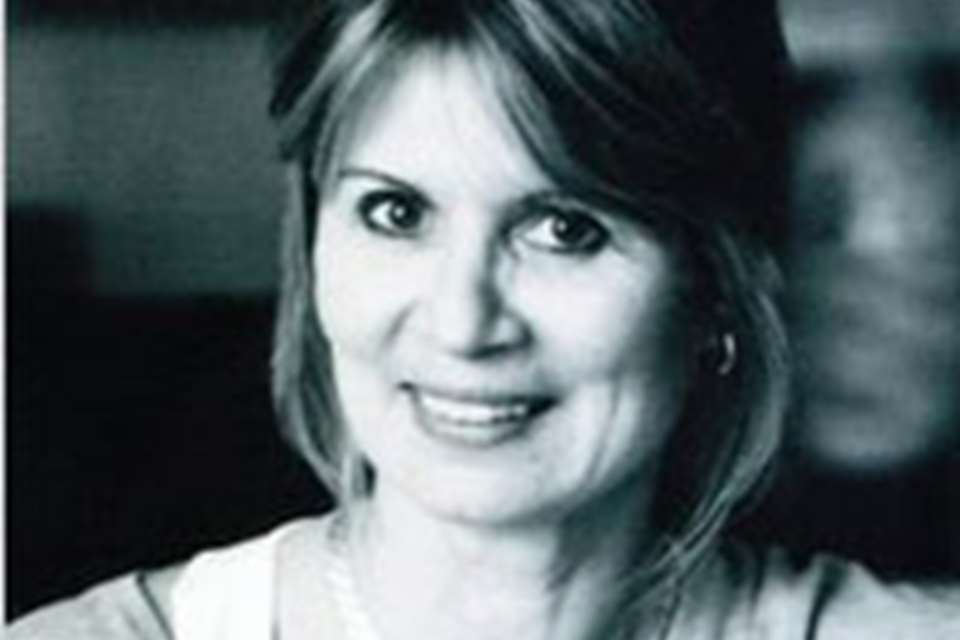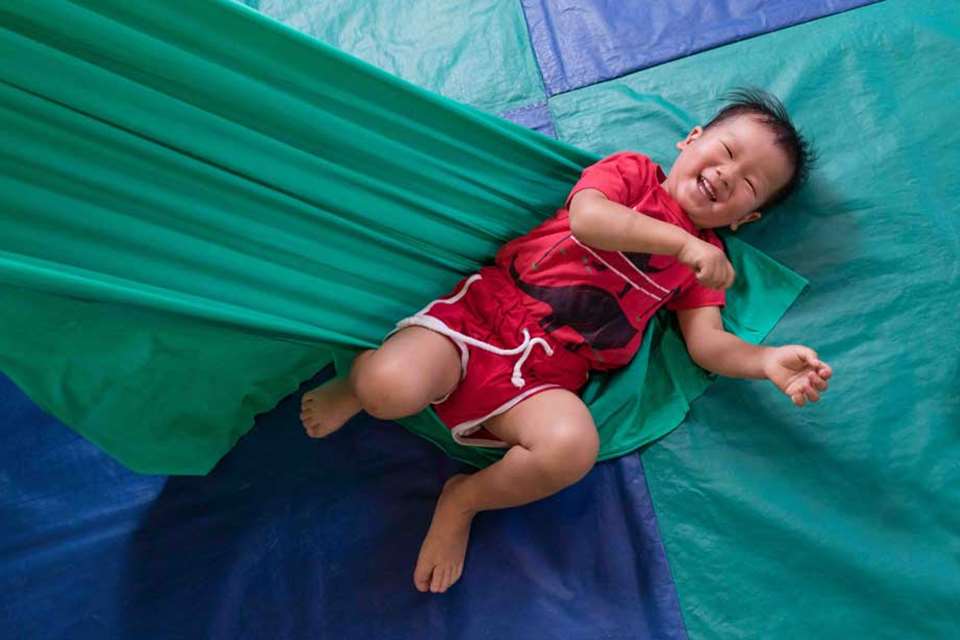Physical development training - Time for action
Dr Lala Manners
Monday, October 29, 2018
In the first of a two-part series, Dr Lala Manners looks at physical development from a training perspective. In this article, she sets out the context, including proposals to change the Early Learning Goals for this Area of Learning

Physical Development is currently one of the three Prime Areas of Learning in the EYFS. Foundation Stage Profile data suggests that 95 per cent of children gain an ‘expected’ level for the physical development component – the highest of any of the prime or specific areas – year on year.
There is continual media coverage of issues relating to children’s physical and emotional health and well-being from birth onwards, plus a plethora of dedicated websites are available to offer guidance. The early years has a committed workforce in daily contact with children and families, and a range of proactive organisations exist to enhance practice.
Yet levels of physical activity remain stubbornly low. The statistics for childhood obesity and dental decay are profoundly shocking – one in ten children is obese by the time they start primary school – and evidence is growing of emerging mental health issues in very young children.
There are pockets of excellent work being done at a local level by inspirational individuals, and the nutrition community is supremely well-organised and well-funded. But what lies at the root of our inability to effect meaningful and sustainable change for children’s physical development, health and well-being; and where may the solutions lie?
TERMINOLOGY
Terminology matters because it informs and determines priorities. While in England and Wales this area of learning is titled ‘physical development’, in Scotland it is ‘health and well-being’ and in Northern Ireland ‘physical development and movement’.
Physical Development in the EYFS is divided into two parts: Moving and Handling, and Health and Self Care. The content has not been an issue – it reflects the holistic nature of our pedagogical roots and has always offered enough ‘wiggle room’ to accommodate a range of approaches. The main problem is that the Early Learning Goals (ELGs) that accompany the content have never been fit for purpose as a meaningful assessment procedure and therefore cannot provide relevant data that may drive policy concerning children’s health.
Has using the broad term ‘physical development’ (rather than health) unwittingly given policy-makers the opportunity to make critical changes to the goals, thereby removing the mechanism within education that provides opportunities to support children’s overall health?
Having failed to embed the Chief Medical Officer (CMO)’s early years physical activity guidelines (2011) in the revised EYFS in 2017 (they appeared in a footnote as a ‘resource practitioners may like to refer to’), another opportunity to address health issues presented itself when the ELGs were reviewed in 2018.
The proposal now is to reduce physical development to ‘Gross motor skills and Fine motor skills’ – and place Health and Self Care under Self-Management, alongside ‘explain the reasons for rules and know right from wrong.’
What’s the problem?
There are several, namely:
How can physical development remain a Prime Area if the health part of this area lies elsewhere? It could well be replaced by something else, e.g. numeracy. If this happened, would the consequences for children’s health be acknowledged?
However much we would wish otherwise, the goals have begun to determine, not just inform, practice. Children are being ‘taught to the goals’ and they now play a disproportionately large role in planning.
The two existing parts of physical development complement each other. Removing Health and Self Care undermines the symbiotic relationship between them that is critical to recognise in providing opportunities for children to be active – e.g. the link between manipulative activities (fine motor) and using a toothbrush (health).
The CMO’s early years physical development guidelines have also been reviewed recently and will broadly follow the Canadian 24-Hour Movement Guidelines for the Early Years. This recognises the intrinsic relationship between physical skills and overall health. Creating a 24-hour model is akin to saying all who engage with young children could play a proactive role in supporting their health and well-being. Implementing these guidelines effectively will be difficult if physical development within an education framework is only about physical skills.
What sort of training would be offered in this field if physical skills alone are the focus? The attendant literature for the revised physical development goals states that ‘children need to develop strength and a love of exercise’ – but why should they? Supporting health and self-care is an absolutely key motivator for providing a range of opportunities for children to move.
Plainly, the terminology should reflect the equal importance and interdependence of both domains. We as a sector must ensure proposed changes to the physical development ELGs are vigorously challenged. Instead, we want aspirational and meaningful goals for physical development that produce relevant data that may inform and drive health policies.
It is now more important than ever that the early years sector understands what physical development really entails and how best to support it in a setting.
MYTHS
The sector’s knowledge base about children’s early physical development is generally poor. Sharon Skade, under 5’s training and development officer for Manchester Greater Sport, makes the following observation:
‘There seem to be shared myths in early years that physical development just happens as children grow – that physical competence and the development of movement takes care of itself. The onset of free-flow settings and the myth that children are always ‘on the move’ provides a tick-box for the provision of physical development with little attention given to the actual time children spend moving or any observations taken of how children move their bodies and how this may be supported and developed.’
Two further myths are:
FIRST: that physical development only happens outdoors. The outdoor play community has done a superb job to raise awareness of the need for outdoor play, but the opportunities provided by the indoor environment to support physical development are rarely mentioned. The assumption that children will be highly active just because they are outside is also never questioned.
SECOND: that physical development can only be supported by expensive resources. Commercial activity providers rely on practitioners’ lack of confidence, knowledge and understanding to embed themselves and encourage dependency. Is outsourcing physical development provision mainly to please the parents and a chance for an extended coffee break? Slick brochures and targeted advertising are often very effective means to release funds that may be better spent on more sustainable initiatives.
Kathy Brodie, director of Early Years TV, asks how practitioners ‘can make connections in practice when they don’t know what the connections are in theory’. All should be able to answer the following questions and know where to find the relevant information to do so:
- Why is tummy time and back time so important for babies and infants?
- What does crawling do for children’s physical development?
- Why do children twirl around and shout when moving at speed?
- Why do some children find sitting still so difficult?
- What compromises on-time toilet training?
- Why do some children walk on tiptoes?
Initiatives like the Daily Mile and the annual Disney activity cards all conspire to compromise good practice in physical development and keep expectations woefully low. As Gill Jones of Ofsted asks, ‘How often do we actually see children getting hot and sweaty?’ The ELGs for physical development are hardly aspirational and the expectations for the physical development component of Development Matters are supremely modest. Currently there is no plan to include a physical development component in any baseline model of assessment.
So how should we re-think physical development? Some suggestions:
Review required underpinning knowledge in all supporting policy documentation and any training opportunities to clarify the critical connections between developmental stages and the role of physical development in informing and supporting all developmental domains.
Advocate for a comprehensive physical development component in any baseline assessment procedure adopted.
Be resourceful. Identify the resources you have already – both material and personal – and recognise that using familiar, accessible resources optimises the transfer of skills and ensures rehearsal and refinement of language competencies. Find a role to support children’s physical development that suits you.
TRAINING
This has been notoriously difficult to get right and is often described as patchy and poor. This situation is changing slowly due to dedicated teams in local boroughs. As Ms Brodie suggests, ‘What works best are enthusiastic and knowledgeable locals who have good long-term relationships with health teams.’
What are the main issues?
Not having National Quality Guidelines for physical development practice. Is there a common consensus on what good practice actually looks like for each developmental stage?
What level of underpinning knowledge is really needed to support physical development practice? The focus varies widely between training providers and can be very partisan and fragmented.
Accredited training at Level 2 and Level 3 is undervalued as it has minimal impact on salary or status and is often expensive to attend.
Continuing problems with securing funding from local councils to ensure long-term implementation of initiatives. Ongoing support is necessary to motivate and inspire. It has been suggested that, ideally, 24 sessions are needed over a year for practitioners working with babies and infants – and 17 sessions for other age groups.
Difficulties in determining the best use of online training – it can work for child development, but this does not always translate into designing and delivering practical sessions.
There are many different approaches to physical development and physical activity whose common purpose is often unacknowledged. This leads to the absence of a unified ‘voice’ when policy decisions are made.
Councils cannot justify expenditure on training for physical development unless schemes of work are properly monitored and evaluated – evidence of impact equals funds, so assessment procedures must be valid and reliable.
Solutions for the sector:
We must determine a generic body of underpinning knowledge that forms the base of all physical development practice – whatever the discipline involved.
We must determine the training opportunities which have worked best for each local council – are there common characteristics that may be identified and disseminated to support councils that may be undecided as to the best approach to supporting children’s physical development, health and well-being?
We must determine how best to accommodate external activity providers and use their expertise and resources wisely.
In part 2, 26 November, Lala Manners will focus on a successful physical development training scheme that was created and implemented by Sharon Skade and her team in Manchester.










